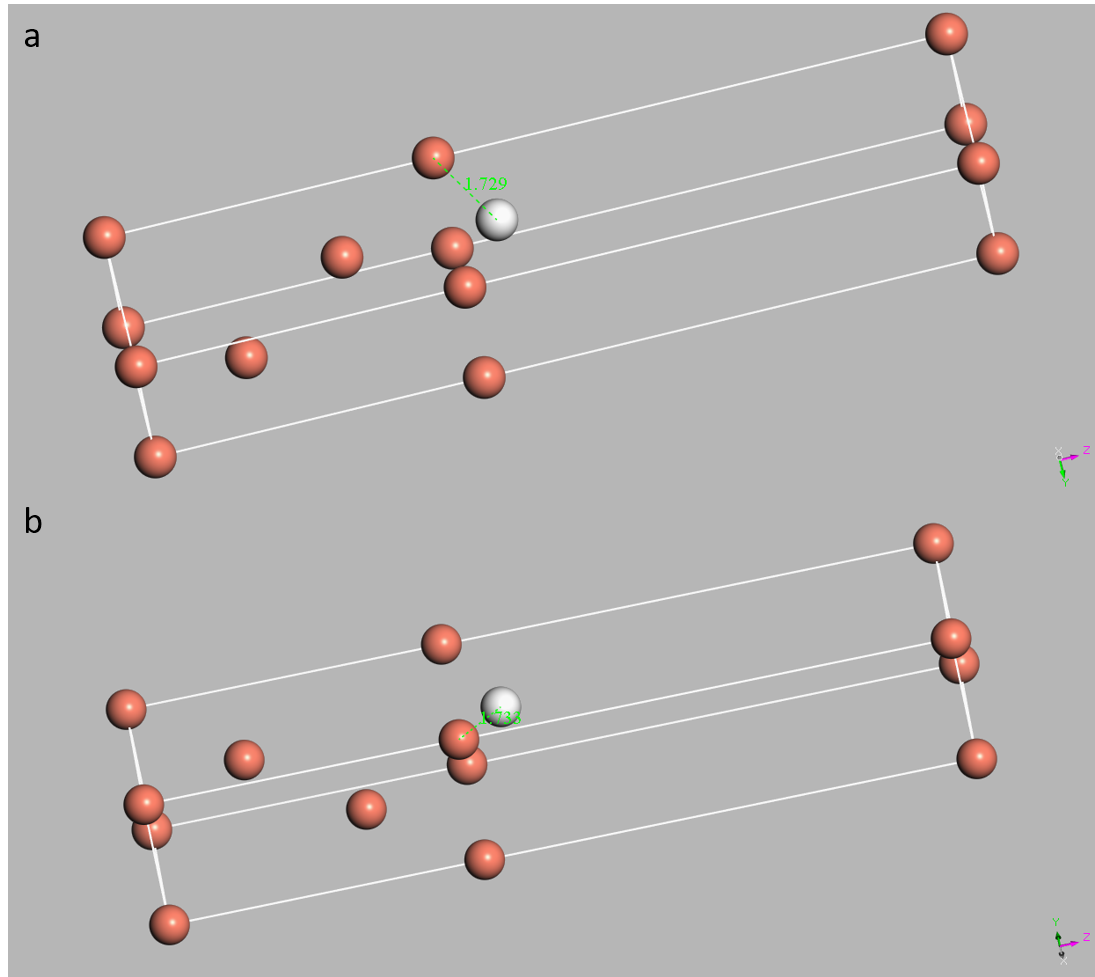Bi2Se3, known as a topological insulator, has attracted much attention recently. In this material, due to the strong spin-orbit coupling (SOC), the conduction band and the valence band of Bi2Se3 are inverted in momentum space, which shows a Dirac-corn like surface state. For this project, I want to calculate the bulk band structure of Bi2Se3 with and without SOC.
1.The crystal structure of Bi2Se3
The crystal structure of Bi2Se3 is shown in Figure 1. The yellow atoms are Se atoms and the purple atoms are Bi atoms. Bi2Se3 has a rhombohedral structure of the space group D5 3d with R3m (#166). The lattice parameter are a=b=4.113 Å, c=28.5859 Å and the bond angle are a=b=90 degrees and c=120 degrees.
2. Calculation of band structure without SOC
After the construction of the crystal, the geometry optimization is performed and the band structure is calculated, which is shown in Figure 3 and 4. As shown in these two figures, without considering SOC, the Bi2Se3 has a direct band gap, which is about 0.505 eV.

Figure 2. The structure of Bi2Se3 with the Brillouin zone (BZ). The blue lines show the Brillouin zone (the primitive unit cell of the reciprocal lattice) with the high symmetry points G (Center of the BZ), A (Center of a hexagonal face), H (Corner point), K (Middle of an edge joining two rectangular faces), M (Center of a rectangular face), L (Middle of an edge joining a hexagonal and a rectangular face).
3. Calculation of band structure with SOC
The band structure with SOC is shown in Figure 5 and Figure 6. By including SOC, Bi2Se3 has an indirect band gap, which is about 0.281 eV. By comparing figures in Section 2 and Section 3, it can be seen that strong SOC has a significant impact on the band structure, and changes the band gap at the G point. Also since there is no direct band gap, it is possible that SOC induces the inversion between conduction and valence band at the G point, which could be a signal of a non-trivial topology.
4.Calculation details
The pseudo atomic calculation performed for Bi: 6s2 6p3
The pseudo atomic calculation performed for Se: 3d10 4s2 4p4
Functional: GGA PBE
Cut off energy: 500eV
k-point set: 3*3*1
SCF tolerance: 1.0*10^ (-5) eV
Pseudopotential: Norm conserving
5. Conclusion and Discussion
In this project, the band structure of Bi2Se3 with and without SOC is calculated and compared. From the band structure, it can be seen that without changing other parameters, SOC can significantly change the band structure. So it is important to include SOC, especially for the elements with the atomic number being greater than the value of 50. Also by considering SOC, there is a signal of band inversion at G point in Bi2Se3, which could be an evidence of a non-trivial topology.
In this project, you can see that the parameters I choose are not very accurate. For one reason, I just want to point out the importance of spin-orbital coupling, so the accuracy of the results is not very high. For another reason, since the structure of Bi2Se3 are very complicated which needs huge calculation time and physical memory to calculate, it is impossible to improve the accuracy just using my computer.
For some future works, using the material studio, we can also get some other properties of Bulk Bi2Se3, such as the optical properties. Also, it is possible that we can build a slab with just a few layers to study the properties of the Bi2Se3 surface.























